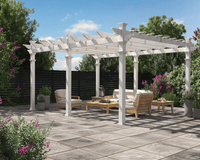
So what exactly is a “Horticultural Therapist”? When we first heard this title we were not sure, but as a company committed to gardening and the outdoors we were fascinated and intrigued. It has always been our sense that gardening is good for you, mind, body and soul. So we connected with Trina Alix and asked her a few questions about her chosen vocation. What is your job title and what do you do? I am horticultural therapist at a mental health and addiction treatment facility. My goal is to help connect people with nature to promote emotional, physical and cognitive wellbeing. A few examples of how I connect people with the healing properties of nature include creating indoor planters, exploring the senses as a grounding tool in the garden and nature-based creative art. Horticultural therapy activities provide skills that can be easily incorporated in life to help cope with stressful emotions and aide in recovery. How can gardening impact and enrich our day to day lives? Gardening can enrich our day to day lives in so many ways and here are four that first come to mind:
- Hope and inspiration – The simple act of planting a seed or observing new growth emerge gives a sense of hope and inspiration.
- Stress reduction - physical exercise and focused attention on natural elements helps to clear the mind, reduce stress and recovery from a hectic day.
- Reward – The love and care that goes into nurturing a garden provides us with so much reward. Rewards can show up in many different forms. Special moments in solitude or time shared with others in the garden creates positive memories and enhances the quality of life. Throughout the growing season we are rewarded with flowers to put in a vase, vegetables for nutritious meals, herbs to flavour food and seeds for the next year.
- Sanctuary – From a raised planter box to large vegetable garden, gardening creates a sacred space where we can feel safe and connected. Not only does gardening create sanctuary for us but also for the wildlife by providing food and shelter.
What first steps can people take to integrate horticulture into lives? There are a few questions I ask people to think about before taking the first steps to integrating horticulture into their lives:
- What do you want to grow and why?
- How much light and space is available?
- How much time do you have to garden?
Answering these questions can help point people into the right direction for resources, education,support and materials. Do you have a story you can share, where you have seen your therapy have a breakthrough or positive effect on a client? Participants sometimes arrive to group feeling sad or anxious and upon completion of horticultural therapy they express feeling a positive shift in their mood. Participants in horticultural therapy describe feeling more grounded through sensory awareness and feeling refreshed through focused attention on the activity and natural materials. We are excited about connecting with Trina more and exploring how her expertise and professional insight can impact and improve the work we do here at New England Arbors and Vita.



